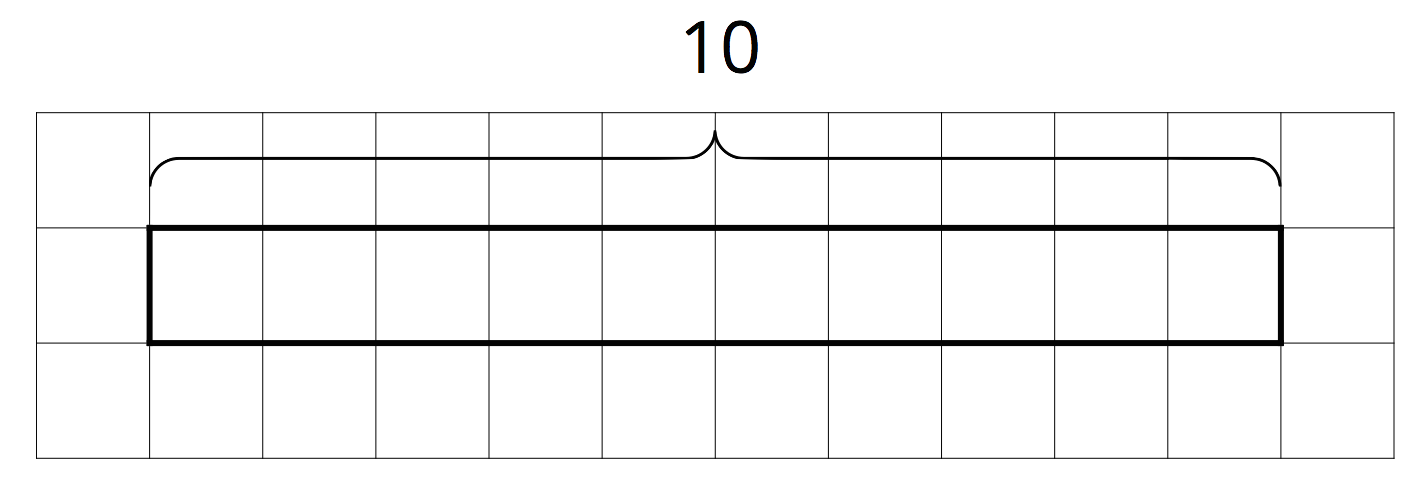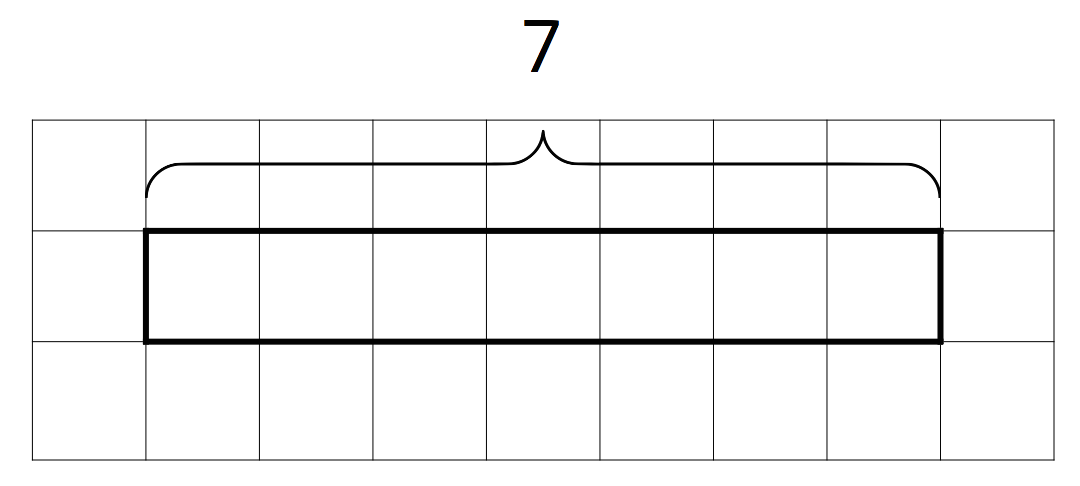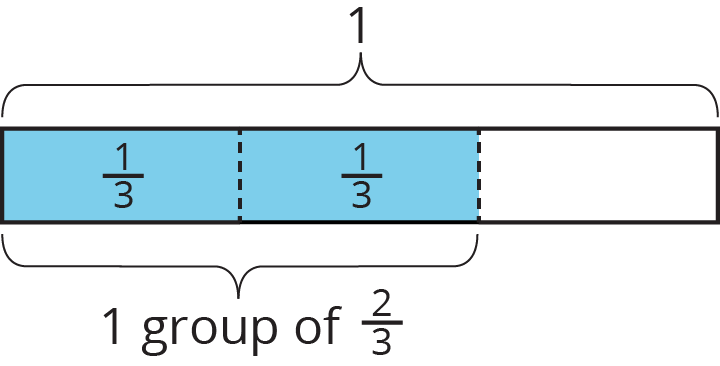A baker used 2 kilograms of flour to make several batches of a pastry recipe. The recipe called for \frac25 kilogram of flour per batch. How many batches did she make?
We can think of the question as: “How many groups of \frac25 kilogram make 2 kilograms?” and represent that question with the equations:
{?} \boldcdot \frac25=2 2 \div \frac25 = {?}
To help us make sense of the question, we can draw a tape diagram. This diagram shows 2 whole kilograms, with each kilogram partitioned into fifths.
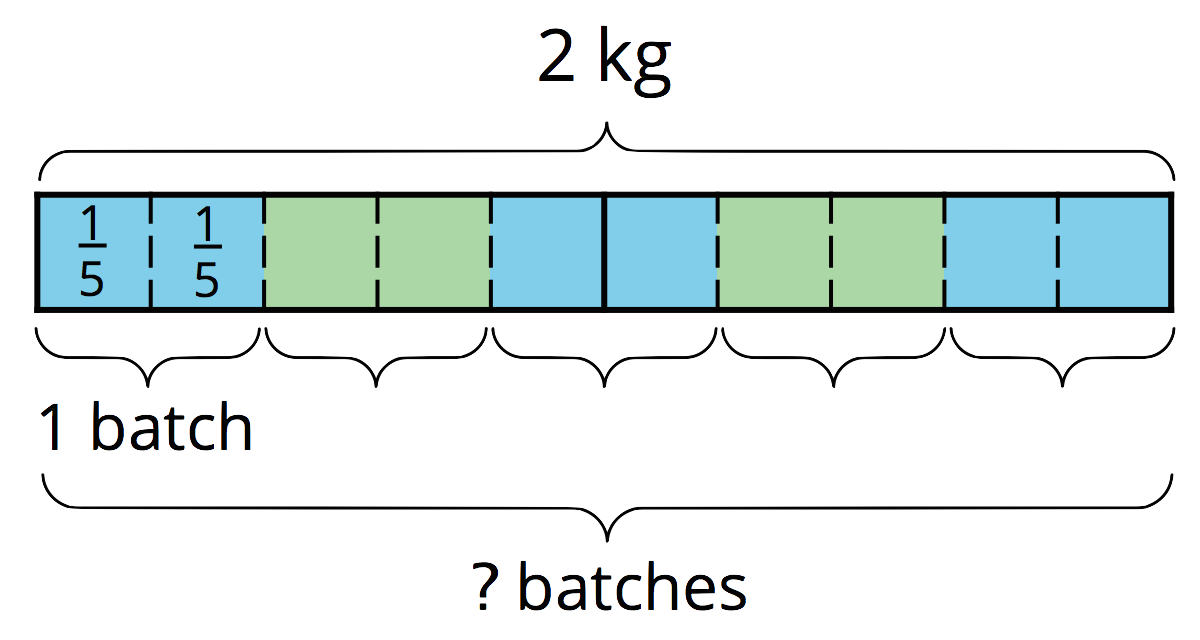
We can see there are 5 groups of \frac 25 in 2. Multiplying 5 and \frac25 allows us to check this answer: 5 \boldcdot \frac 25 = \frac{10}{5} and \frac {10}{5} = 2, so the answer is correct.
Notice the number of groups that result from 2 \div \frac25 is a whole number. Sometimes the number of groups we find from dividing may not be a whole number. Here is an example:
Suppose one serving of rice is \frac34 cup. How many servings are there in 3\frac12 cups?
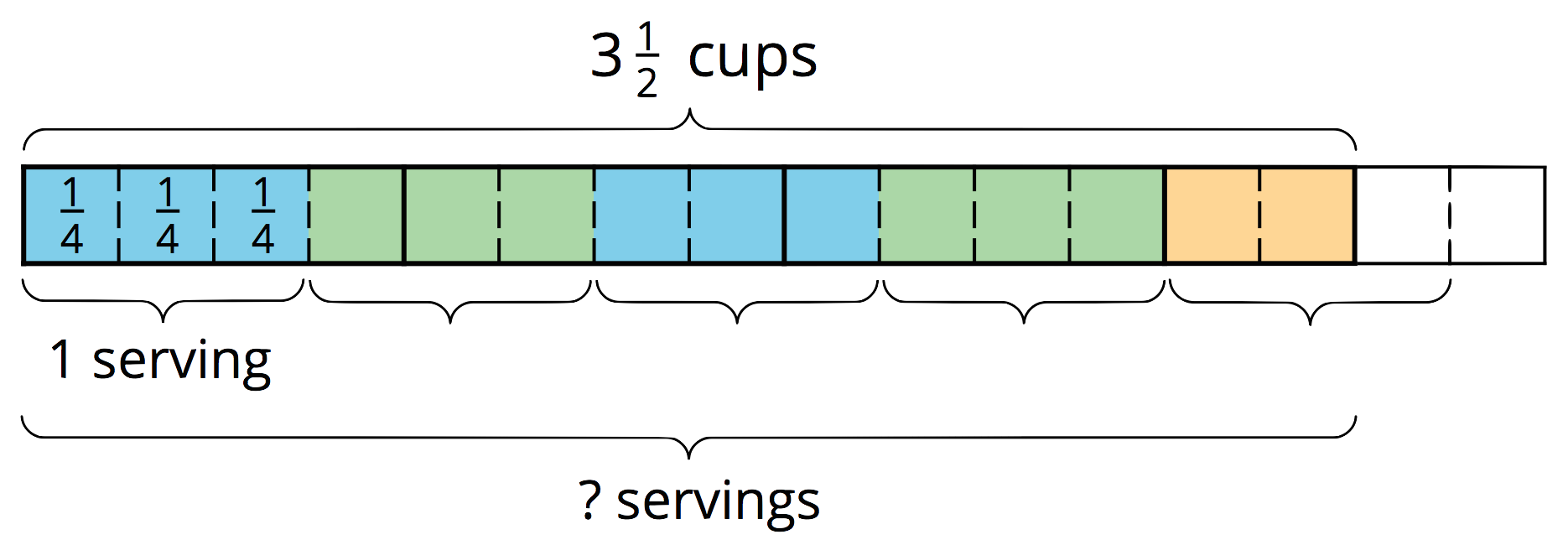
{?}\boldcdot \frac34 = 3\frac12 3\frac12 \div \frac34 = {?}
Looking at the diagram, we can see there are 4 full groups of \frac 34, plus 2 fourths. If 3 fourths make a whole group, then 2 fourths make \frac 23 of a group. So the number of servings (the “?” in each equation) is 4\frac23. We can check this by multiplying 4\frac23 and \frac34.
4\frac23 \boldcdot \frac34 = \frac{14}{3} \boldcdot \frac34, and \frac{14}{3} \boldcdot \frac34 = \frac{14}{4}, which is indeed equivalent to 3\frac12.
